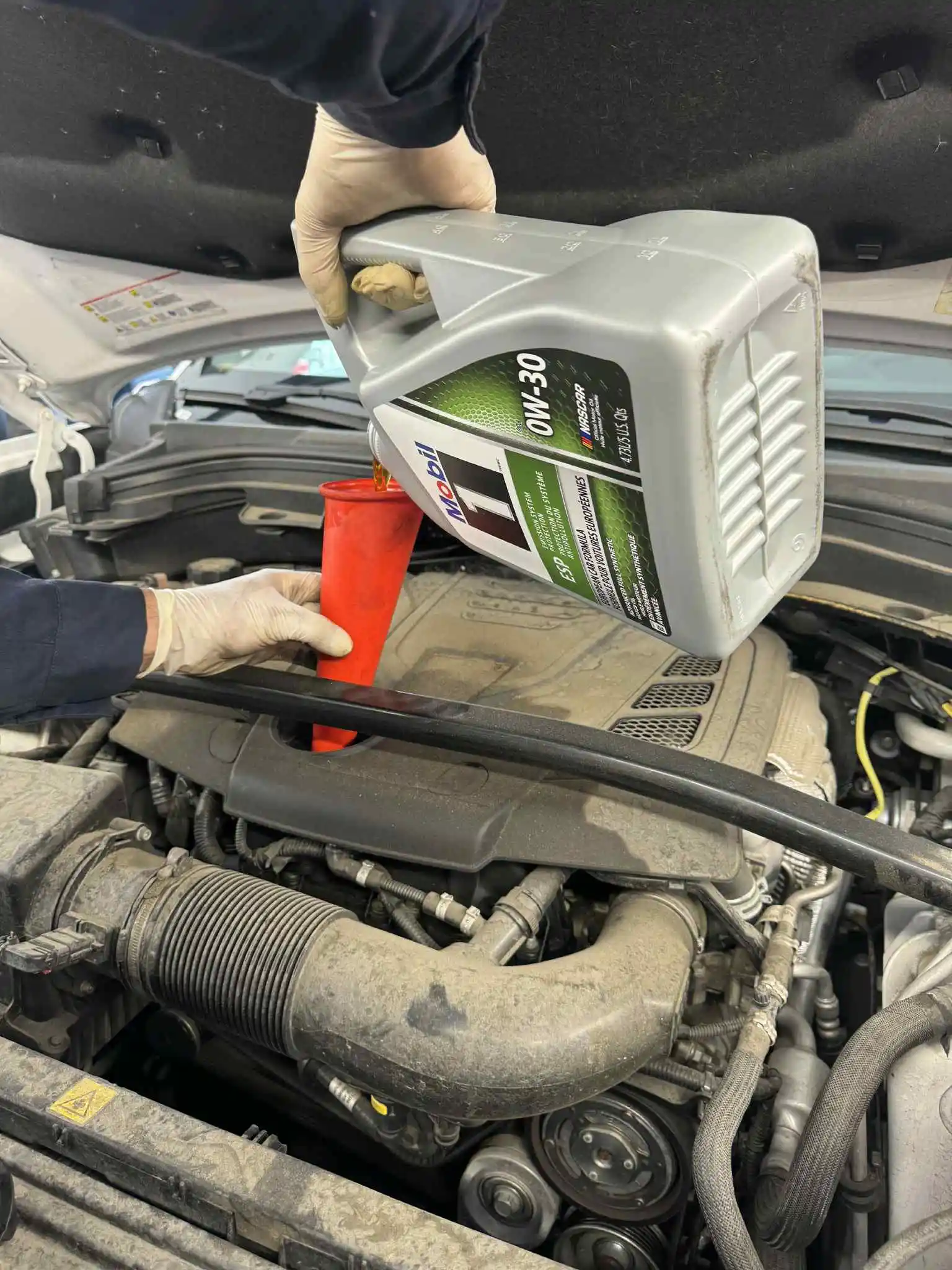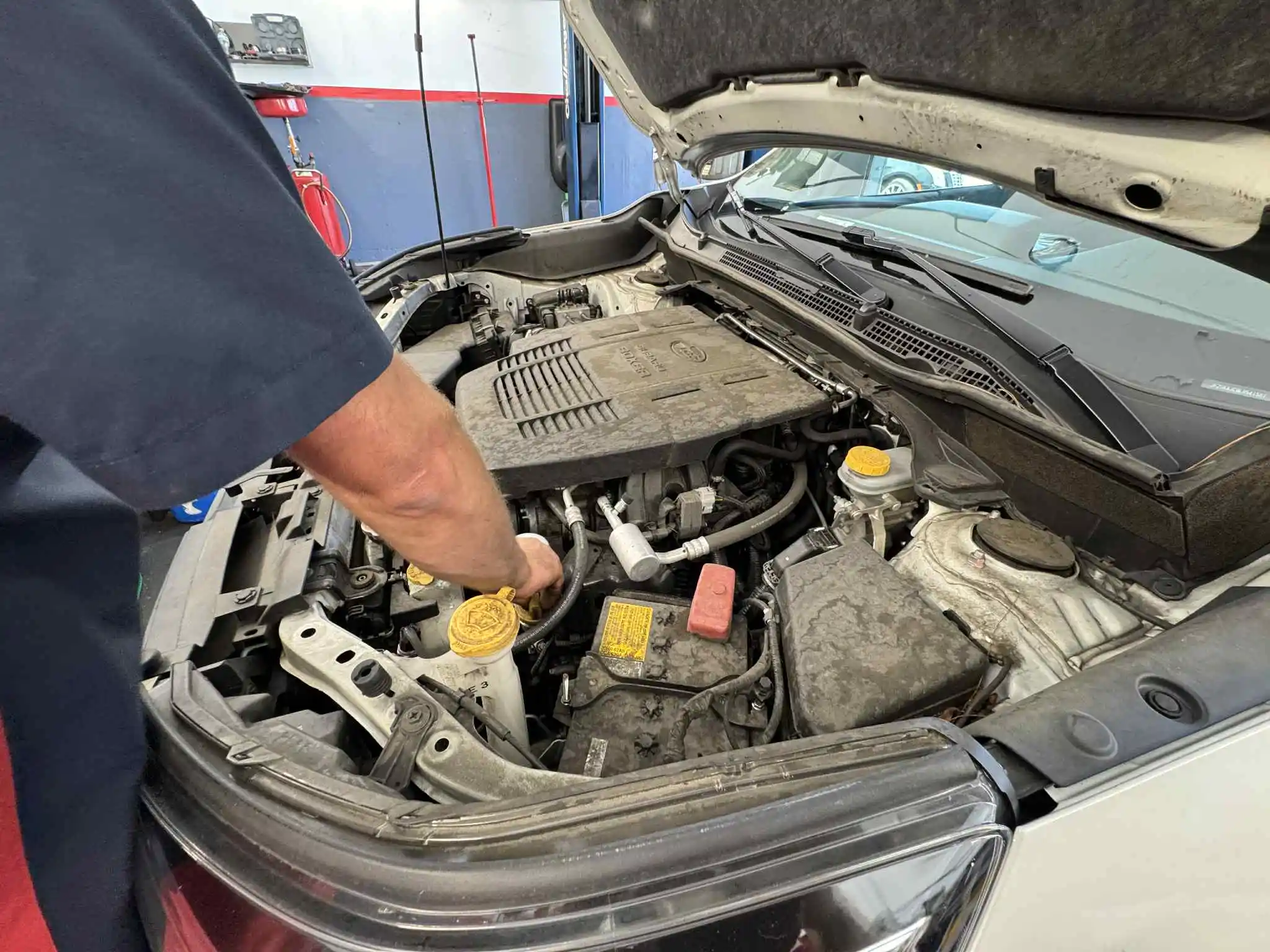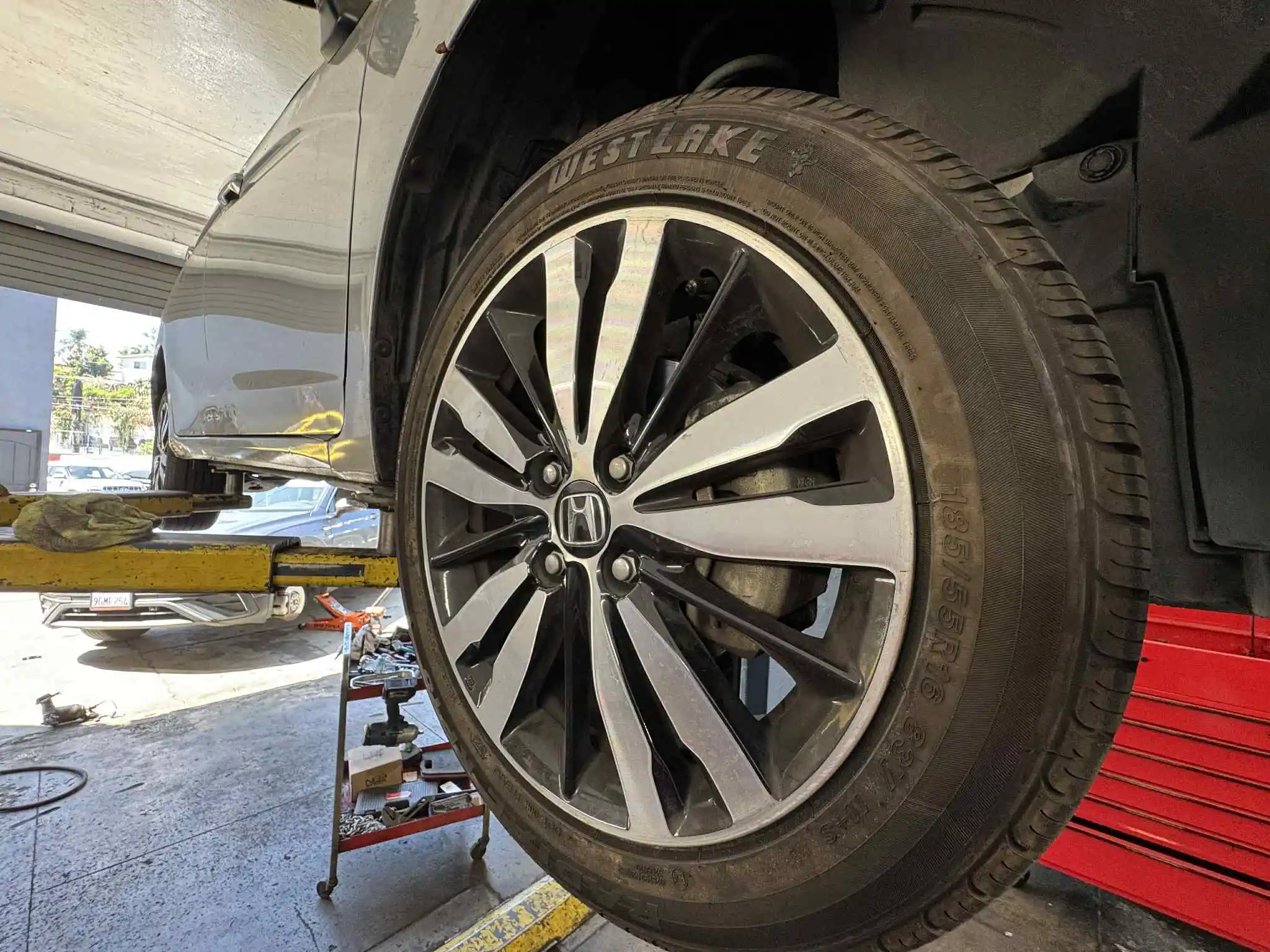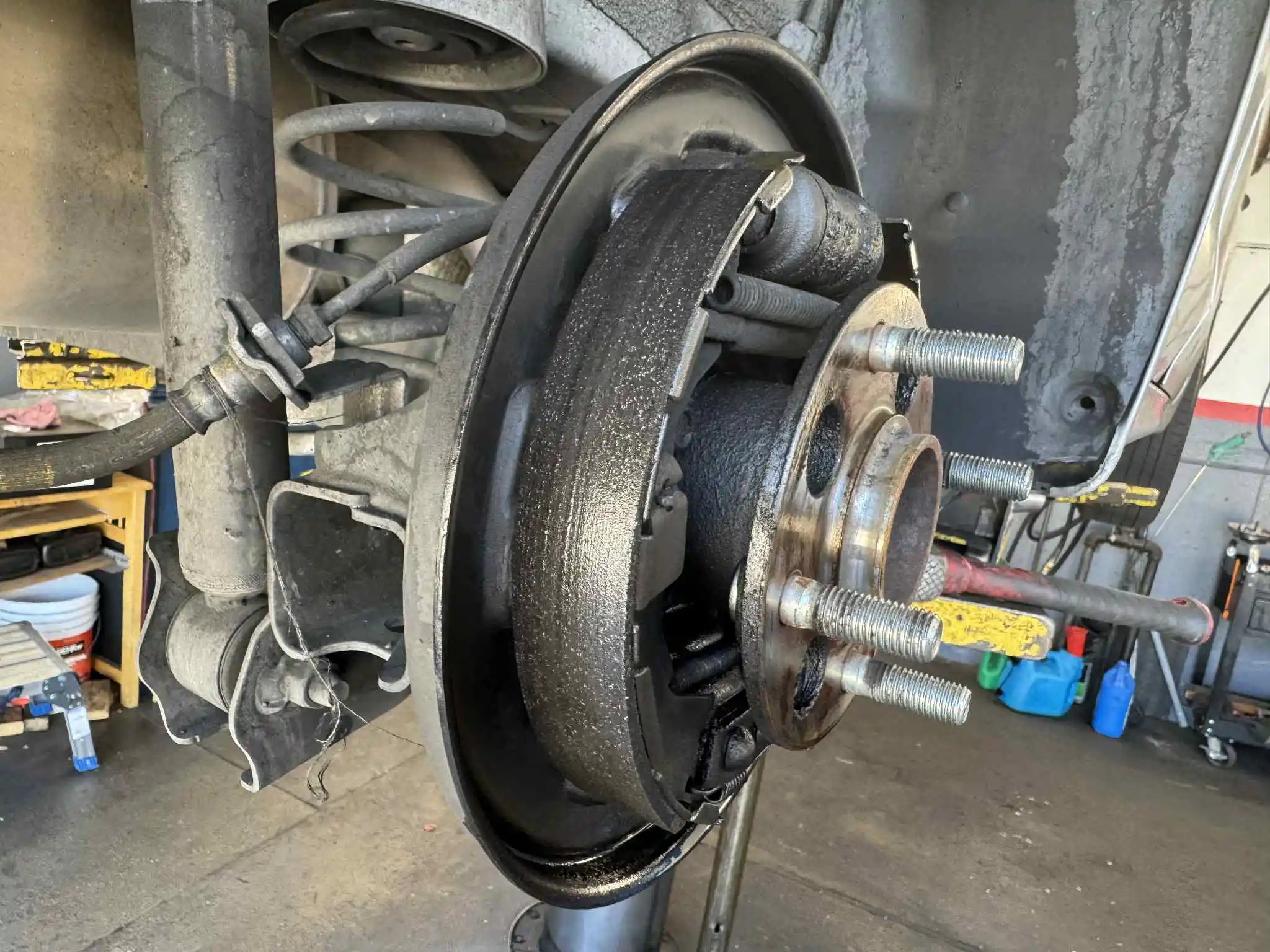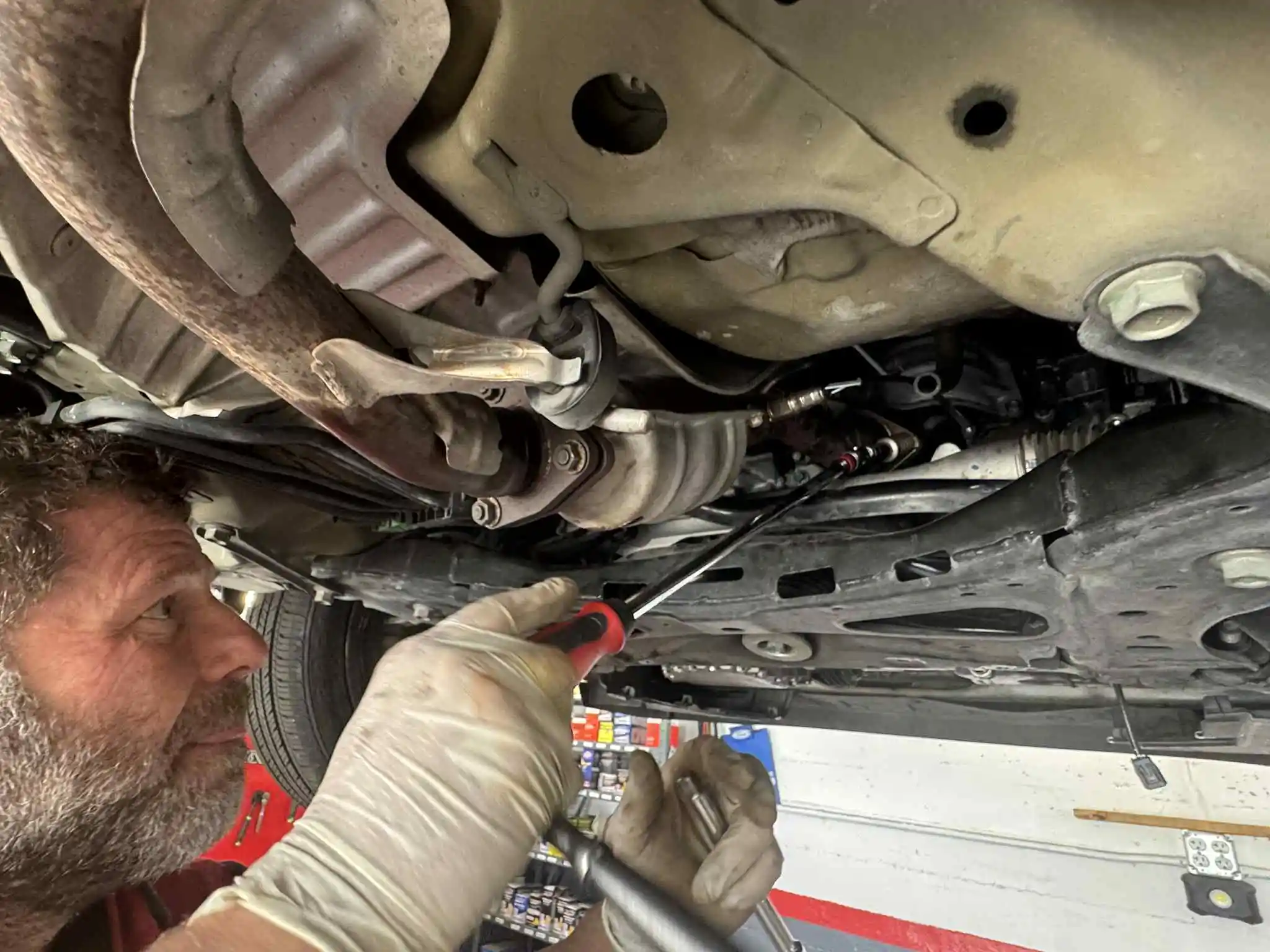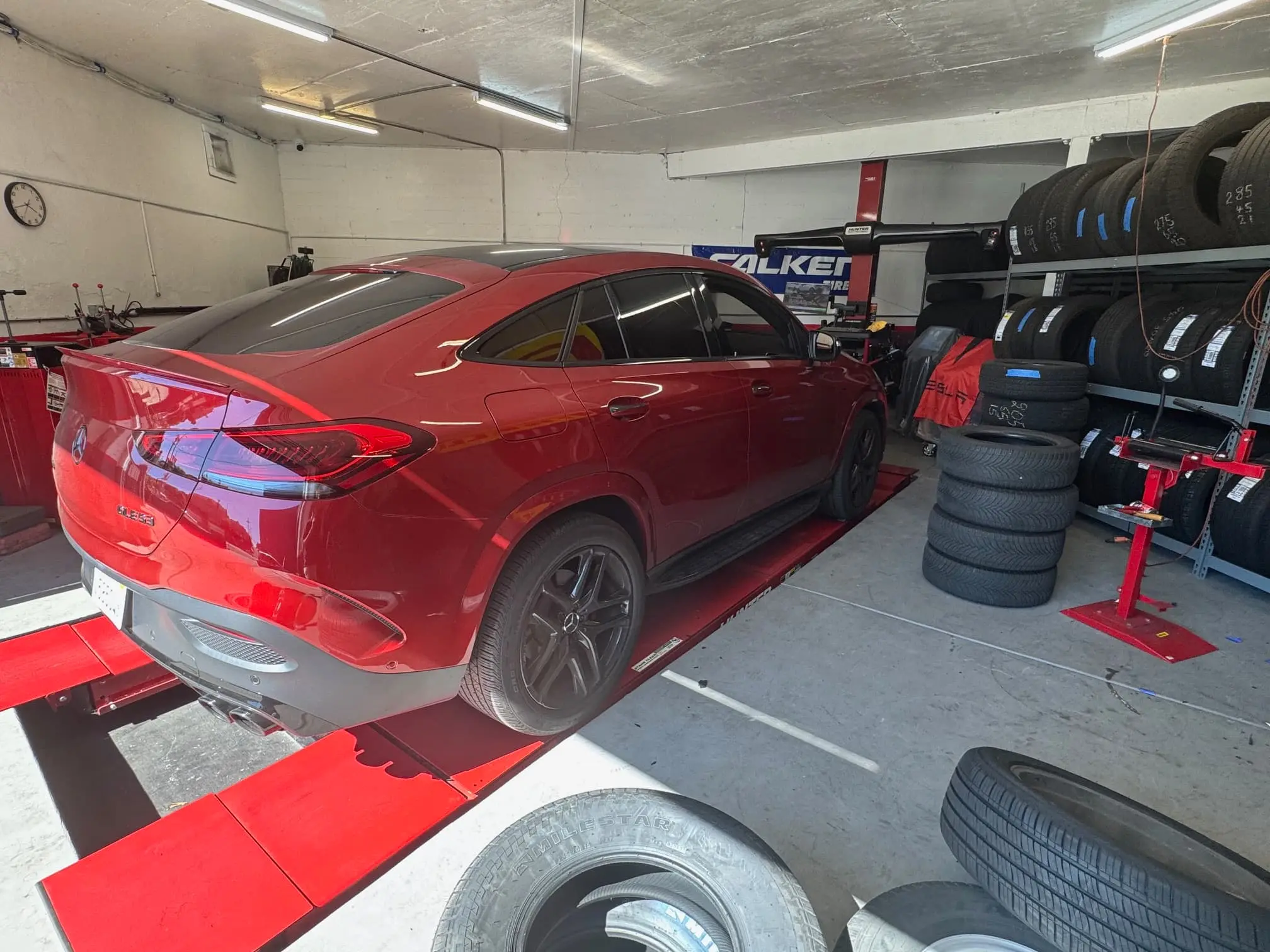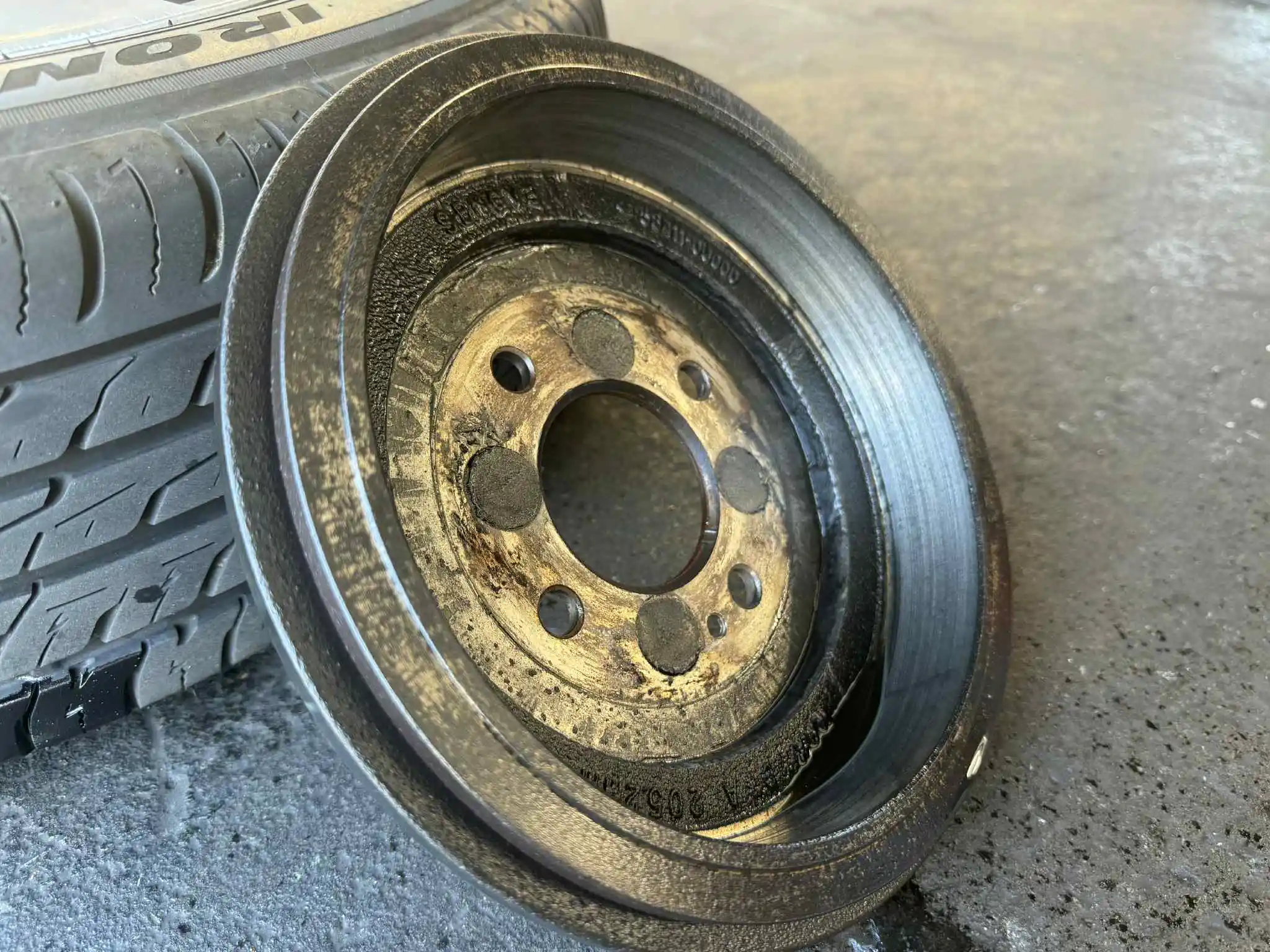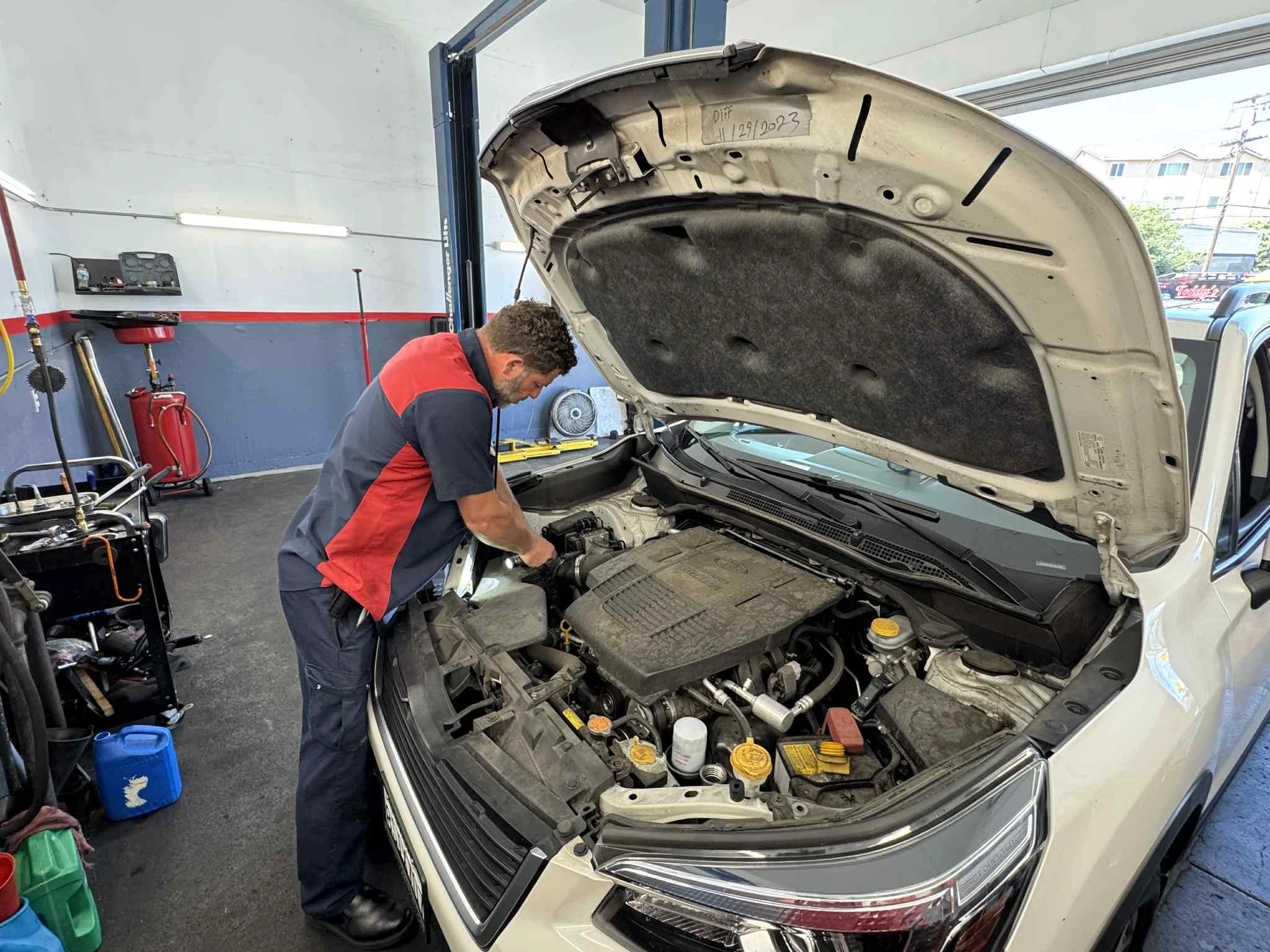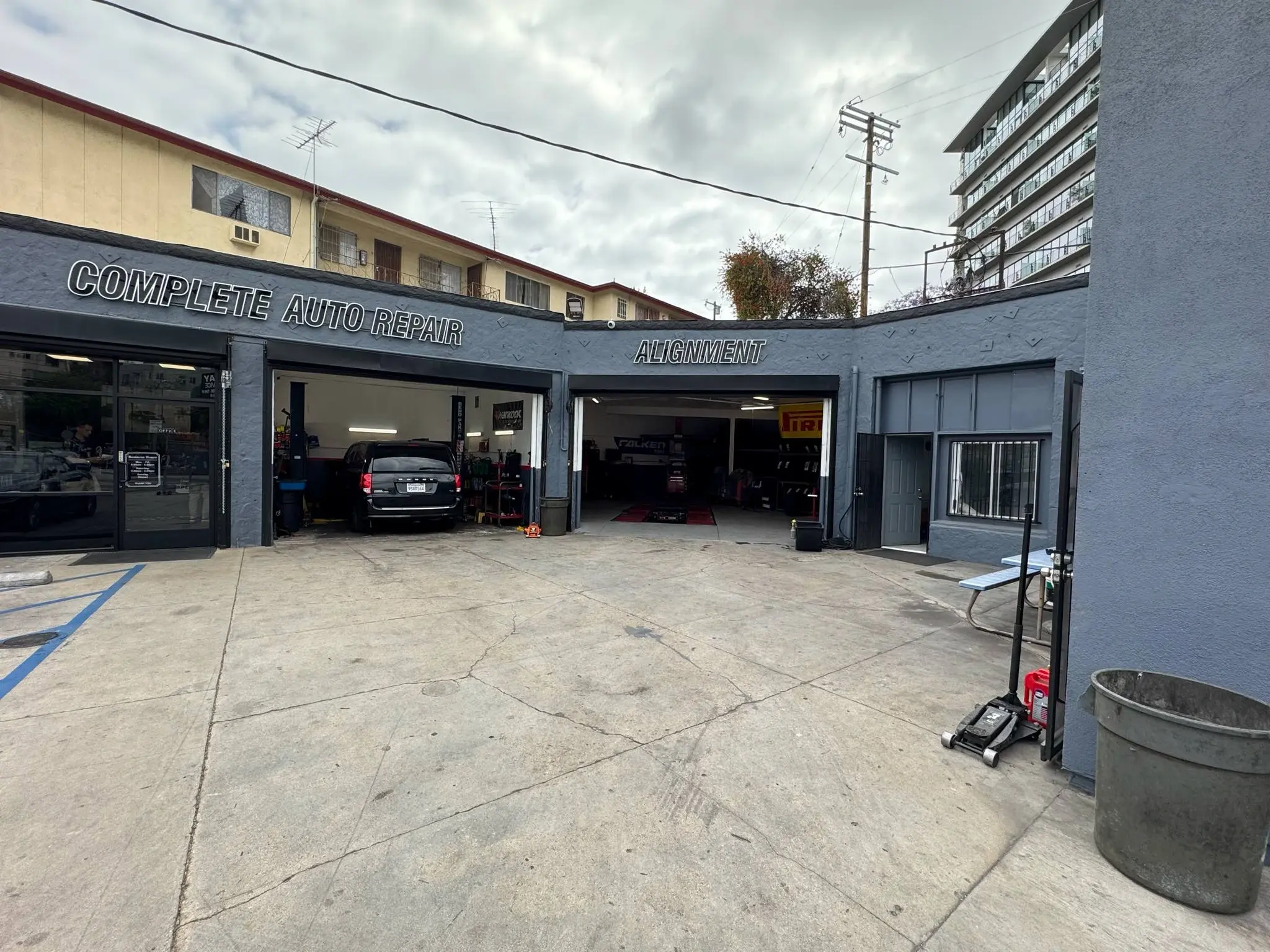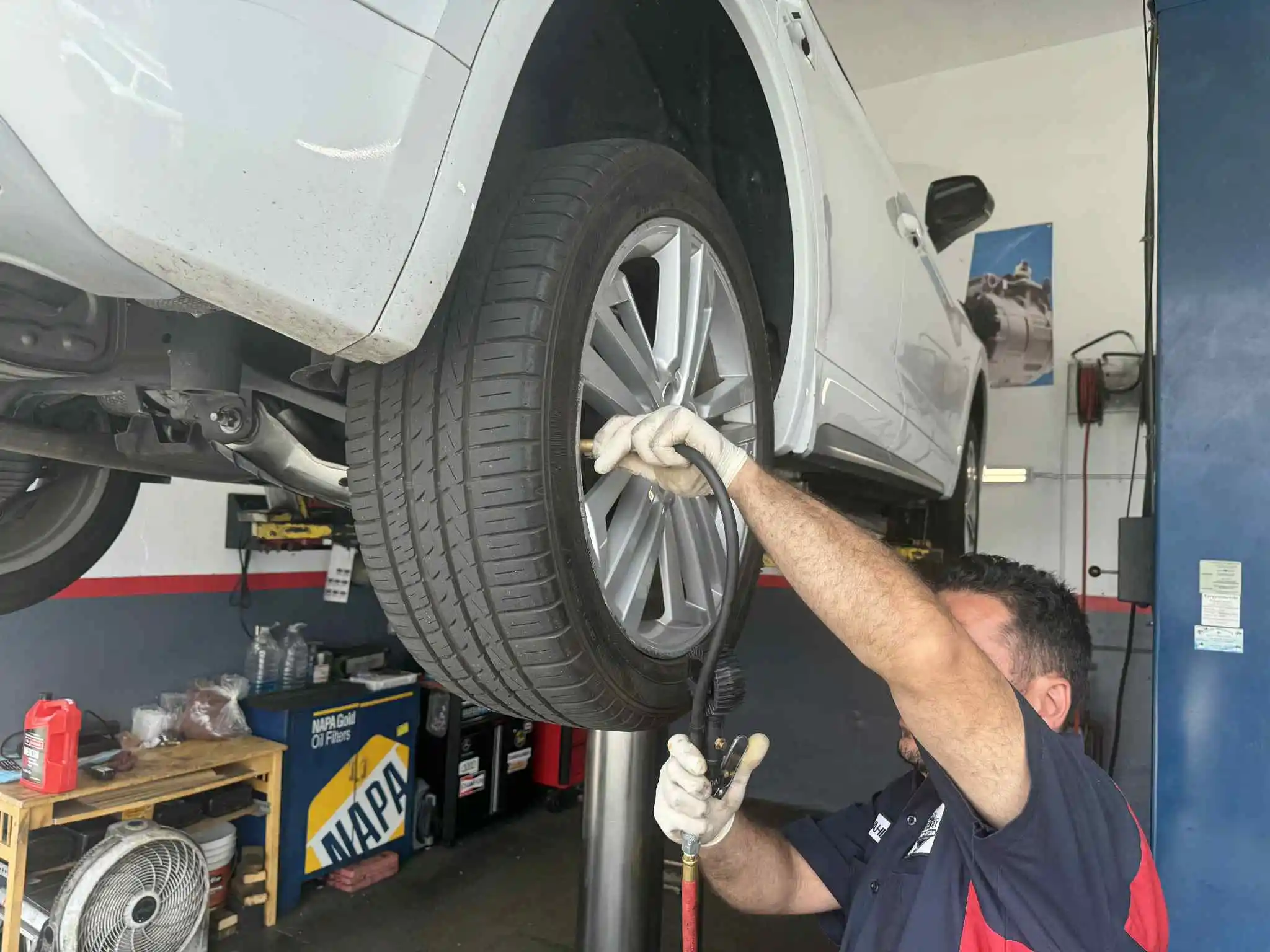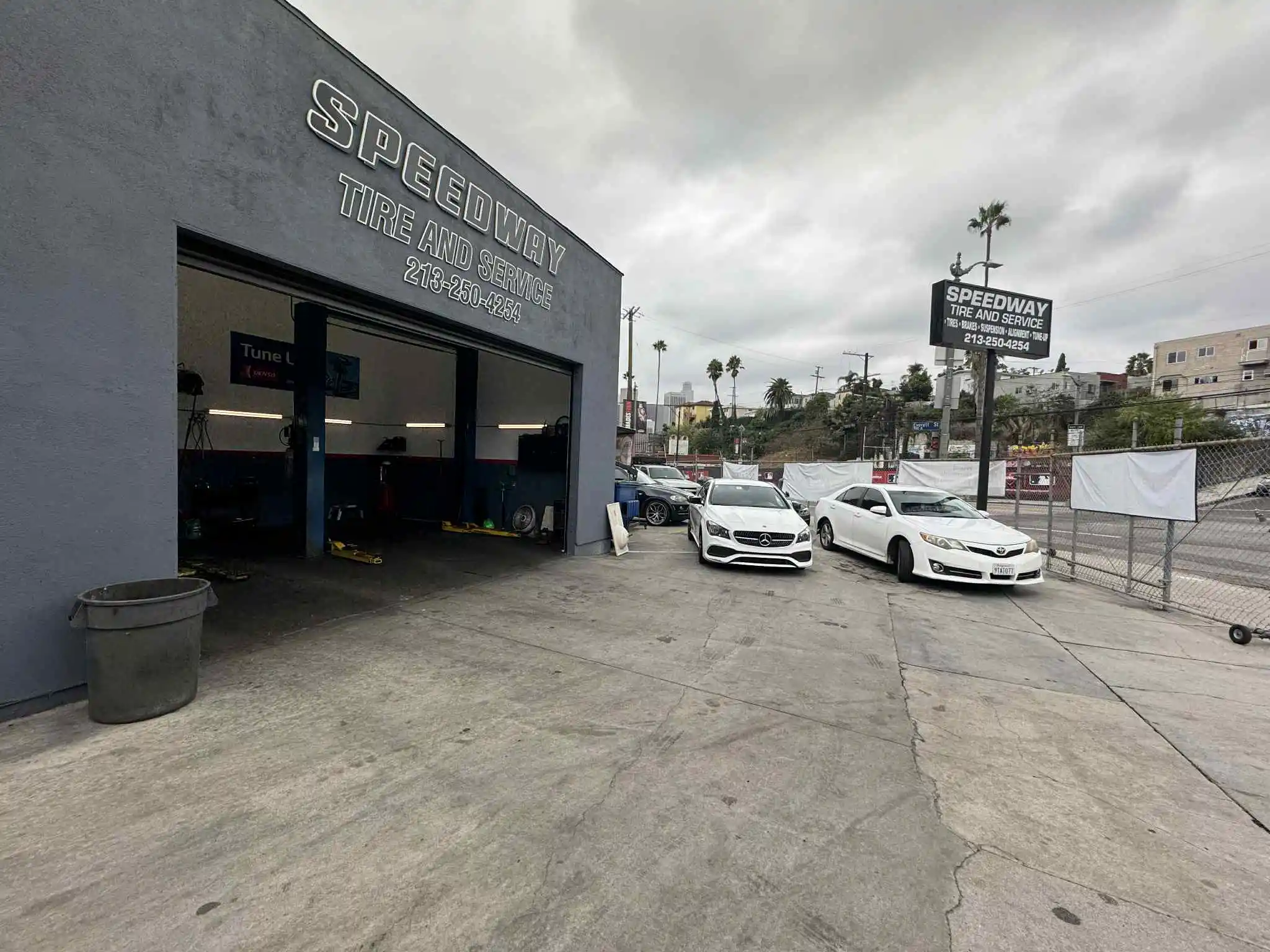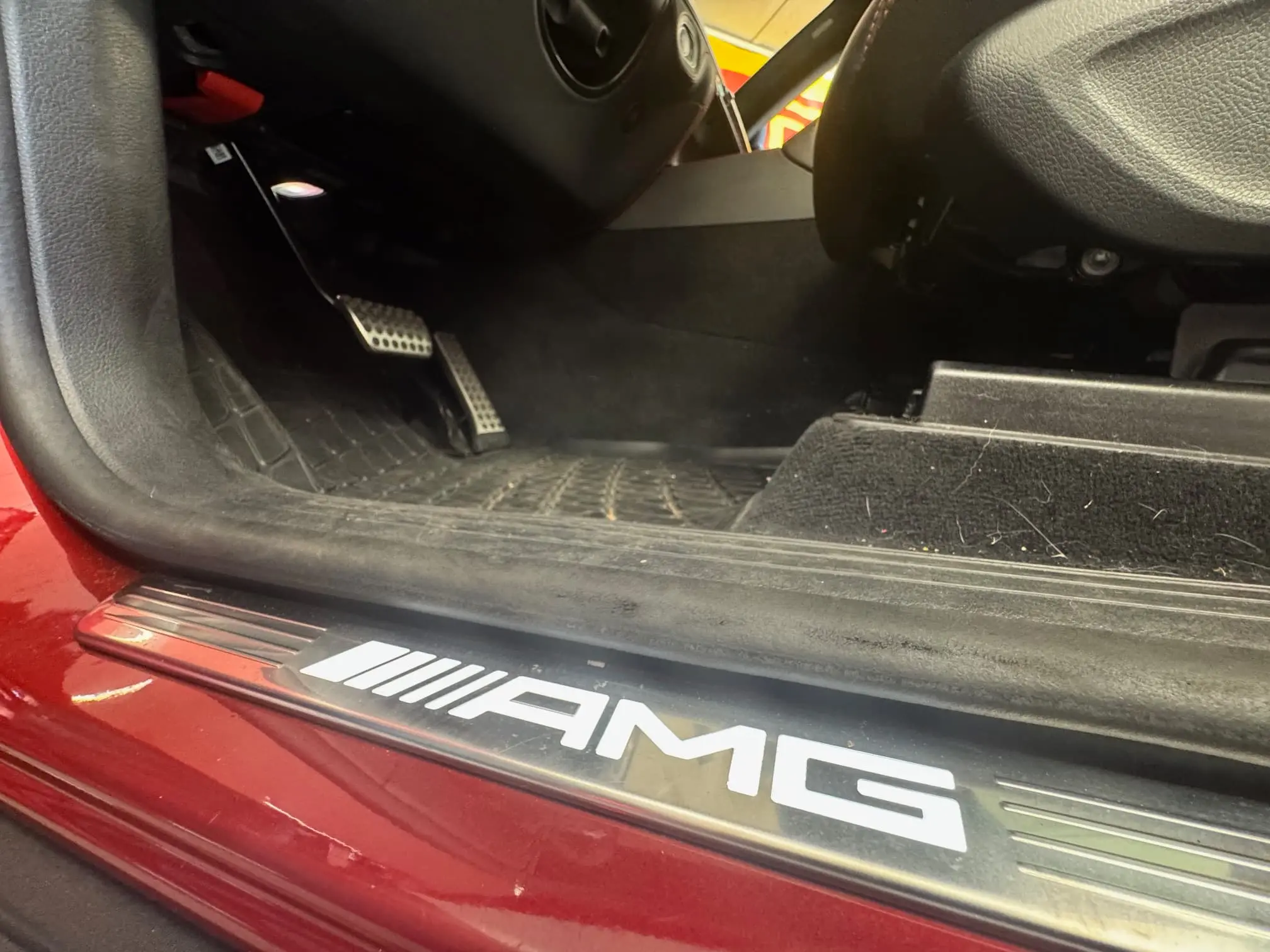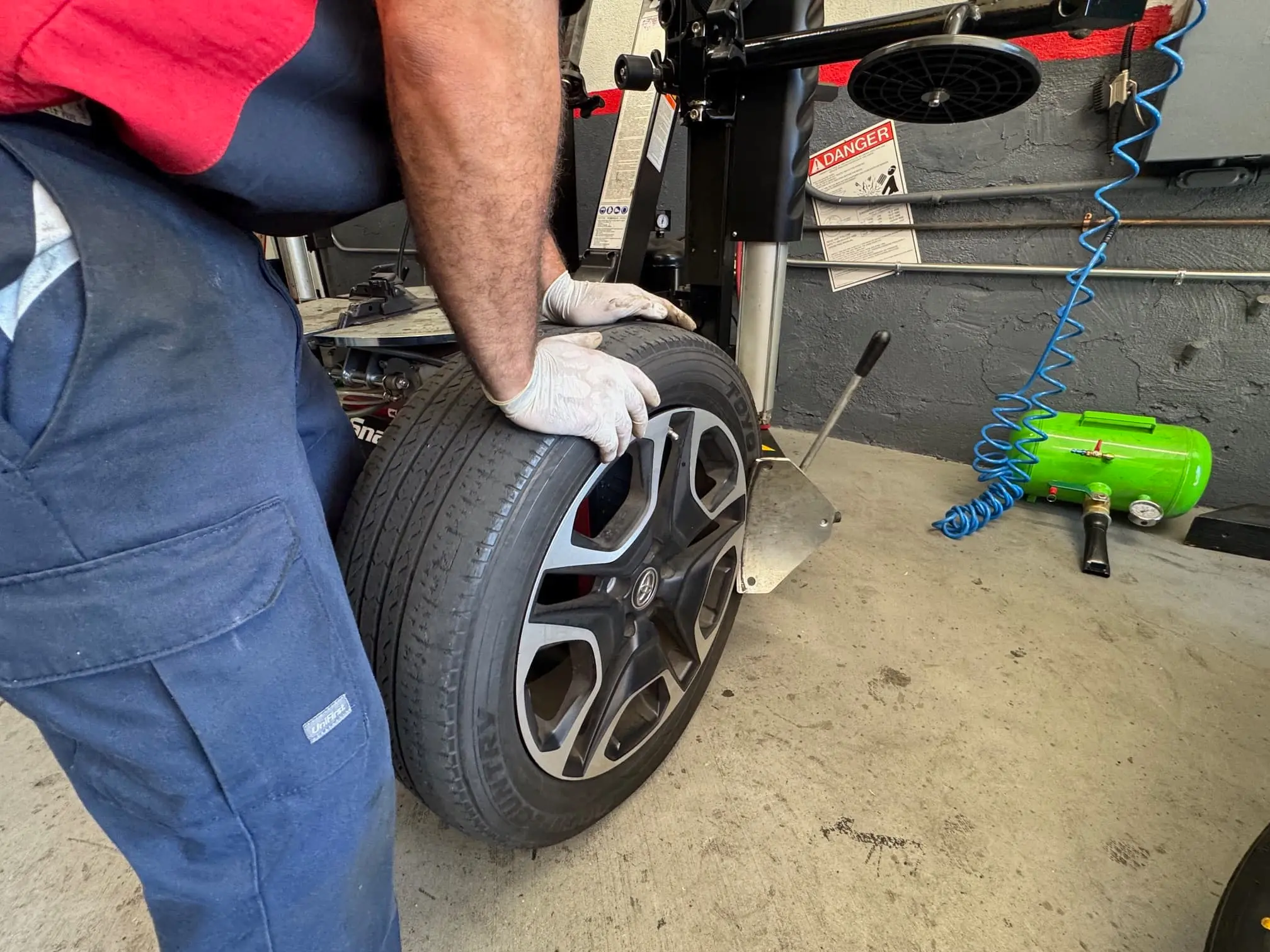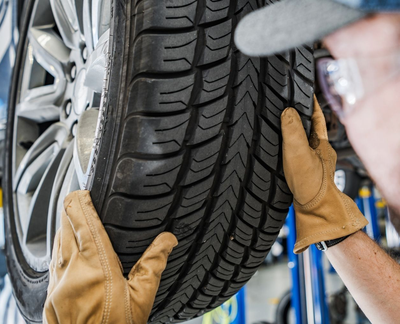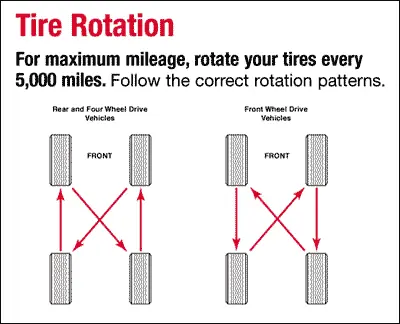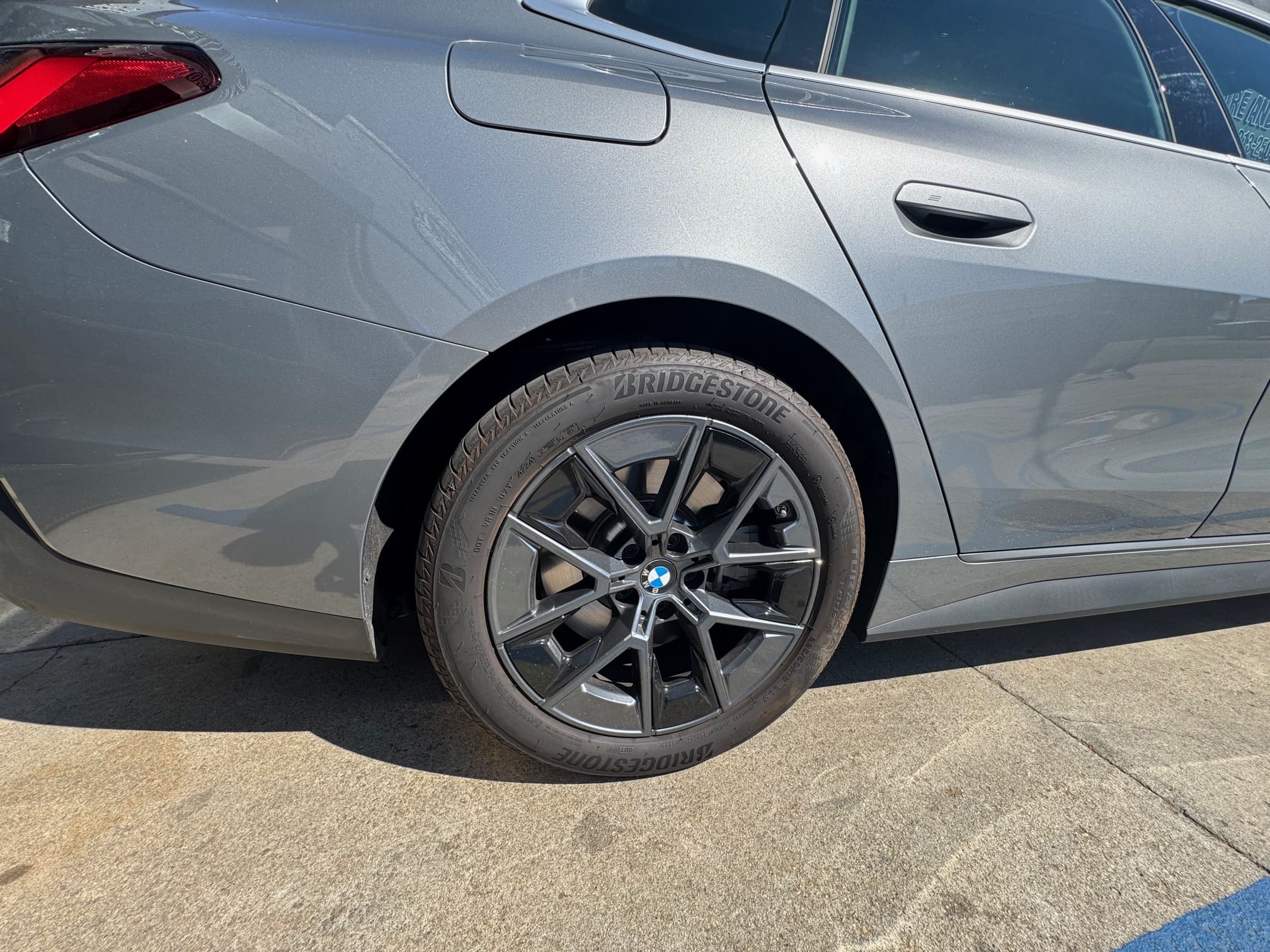Used vs. New Tires: A Guide for Budget-Conscious Silver Lake Drivers
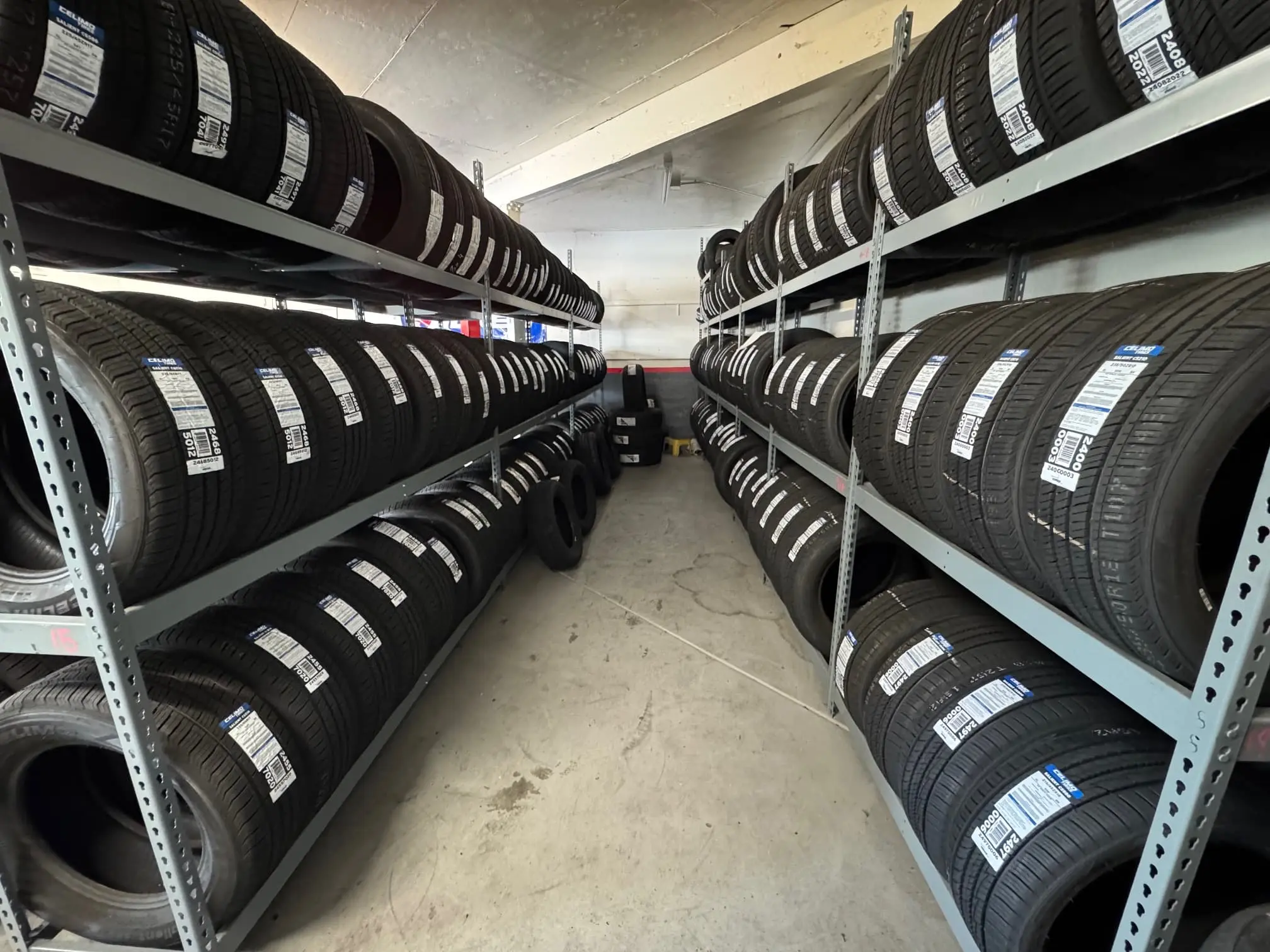
Introduction
The decision between used tires vs new tires confronts budget-conscious drivers throughout Los Angeles, particularly in neighborhoods like Silver Lake where parking challenges, steep hills, and urban driving conditions place unique demands on vehicles. Understanding used tire risks, how to check tread depth, and how to read tire age DOT codes helps drivers make informed decisions that balance safety, performance, and budget constraints.
Used tires offer immediate cost savings that appeal to drivers facing unexpected tire replacement needs or managing tight budgets. However, used tires carry inherent risks—unknown history, hidden damage, reduced remaining life, and potential safety compromises—that may ultimately cost more than the initial savings suggest. New tires provide known history, full warranties, maximum remaining life, and optimal safety but require larger upfront investments.
At Speedway Tire and Service, we serve Downtown LA and Silver Lake drivers from our location at 1165 West Sunset Blvd. We understand the financial pressures drivers face and provide honest guidance about used tires vs new tires to help you make the best decision for your situation, safety, and budget.
In this comprehensive guide, we'll explore the true costs and risks of used tires, how to evaluate used tire condition, when used tires might be appropriate, why new tires often provide better value, how to check tread depth and tire age, and how Speedway Tire and Service helps Silver Lake drivers get safe, reliable tires within their budgets.
Understanding the Used Tire Market
The used tire market exists because tires removed from vehicles often retain usable tread life, creating opportunities for resale at reduced prices.
Sources of Used Tires
Used tires come from various sources with different risk profiles.
Tire Rotation Removals: Some used tires come from vehicles where owners replaced all four tires despite some having remaining tread. These represent the best used tire option—known recent history, relatively even wear, and substantial remaining life.
Accident Vehicles: Many used tires come from vehicles totaled in accidents. While tires may appear undamaged, they may have sustained impact damage, sidewall stress, or internal structural damage not visible externally.
Lease Returns: Vehicles returned at lease end often have tires with 30-50% remaining tread. These can be good used tire sources if properly inspected.
Unknown History: Many used tires have completely unknown histories. Previous ownership, storage conditions, damage history, and age remain mysteries. These carry the highest risk.
Used Tire Risks
Used tires carry multiple risks that may not be immediately apparent.
Unknown Damage History: Used tires may have sustained impact damage from potholes, curbs, or accidents. Internal structural damage may not be visible but compromises safety.
Age-Related Degradation: Rubber degrades over time regardless of tread depth. Tires older than 6 years become increasingly dangerous due to rubber hardening and internal deterioration.
Improper Storage Damage: Tires stored improperly (exposed to sunlight, extreme temperatures, or chemicals) degrade faster. Used tire sellers rarely disclose storage history.
Hidden Repairs: Some used tires have been repaired (plugged or patched) without disclosure. Multiple repairs or repairs in unsafe locations compromise tire integrity.
Uneven Wear Patterns: Uneven wear indicates alignment, suspension, or inflation problems in the previous vehicle. These patterns may continue causing problems and reduce remaining life.
Reduced Remaining Life: Used tires have already consumed 30-70% of their usable life. The "savings" may only buy a few months of use.
No Warranty: Used tires typically come with no warranty. If they fail prematurely, you've lost your investment with no recourse.
Liability: In accidents involving tire failure, using used tires may complicate insurance claims or legal liability.
At Speedway Tire and Service, we help Silver Lake drivers understand these risks and make informed decisions about used tires vs new tires.
Call (213) 250-4254 to discuss your tire options.
How to Check Tread Depth
Tread depth directly affects traction, braking, and hydroplaning resistance. Knowing how to check tread depth helps evaluate both used and new tires.
Why Tread Depth Matters
Tread depth affects critical safety functions.
Wet Traction: Tread grooves channel water away from the contact patch. Shallow tread reduces water evacuation, increasing hydroplaning risk.
Braking Distance: Worn tread increases braking distances, particularly on wet surfaces. Tires at 4/32" tread depth require 30-40% more distance to stop on wet roads than new tires.
Snow and Ice Traction: Winter traction deteriorates rapidly as tread wears. Tires below 6/32" provide inadequate snow traction.
Hydroplaning Resistance: Hydroplaning occurs when water builds up faster than tread grooves can evacuate it. Worn tread hydroplanes at lower speeds.
Legal Minimum Tread Depth
California law requires minimum 1/32" tread depth, but this represents the absolute legal minimum—not a safe minimum.
Legal Minimum: 1/32" (essentially bald)
Replacement Recommendation: 4/32" for all-season tires, 6/32" for winter tires
Safety Margin: Tires at legal minimum are extremely dangerous in wet conditions. Don't wait until tires reach legal minimum to replace them.
The Penny Test
The penny test provides a quick tread depth estimate using a common coin.
How to Perform:
1.Take a penny with Lincoln's head visible
2.Insert the penny into a tread groove with Lincoln's head pointing down
3.If you can see the top of Lincoln's head, tread depth is at or below 2/32" (replace immediately)
4.If Lincoln's head is partially covered, tread depth is approximately 2/32" to 4/32" (plan replacement soon)
5.If Lincoln's head is mostly covered, tread depth exceeds 4/32" (adequate remaining life)
Limitations: The penny test provides only rough estimates. For accurate measurements, use a tread depth gauge.
The Quarter Test
The quarter test provides a higher threshold for replacement planning.
How to Perform:
1.Take a quarter with Washington's head visible
2.Insert the quarter into a tread groove with Washington's head pointing down
3.If you can see the top of Washington's head, tread depth is at or below 4/32" (replace soon)
4.If Washington's head is partially or mostly covered, tread depth exceeds 4/32" (adequate remaining life)
Use: The quarter test identifies when tires approach the recommended replacement threshold (4/32") rather than the legal minimum (1/32").
Tread Depth Gauges
Tread depth gauges provide accurate measurements in 32nds of an inch.
Types: Simple stick gauges or digital gauges
How to Use:
1.Insert the gauge probe into a tread groove
2.Press down until the gauge base contacts the tread surface
3.Read the measurement in 32nds of an inch
4.Check multiple grooves across the tire width and around the circumference
Interpretation:
•10/32" to 12/32": New tire depth
•6/32" to 10/32": Good remaining life
•4/32" to 6/32": Moderate remaining life, plan replacement
•2/32" to 4/32": Limited remaining life, replace soon
•Below 2/32": Replace immediately (unsafe)
Checking for Uneven Wear
Uneven wear patterns indicate vehicle problems or improper maintenance.
Center Wear: Indicates over-inflation. Center tread wears faster than edges.
Edge Wear: Indicates under-inflation. Edges wear faster than center.
One-Side Wear: Indicates alignment problems. One edge wears significantly faster than the other.
Cupping/Scalloping: Indicates suspension problems or tire imbalance. Tread develops high and low spots around the circumference.
Feathering: Indicates toe alignment problems. Tread blocks develop sharp edges on one side.
When evaluating used tires, uneven wear patterns suggest the tires came from vehicles with maintenance problems. These patterns may continue causing issues and reduce remaining life.
At Speedway Tire and Service, we provide free tread depth checks and help Silver Lake drivers understand what their tread depth means for safety and remaining tire life.
Call (213) 250-4254 or visit us at 1165 West Sunset Blvd for a free tread depth check.
How to Read Tire Age DOT Code
Tire age significantly affects safety regardless of tread depth. Learning to read the tire age DOT code helps evaluate both used and new tires.
Why Tire Age Matters
Tire rubber degrades over time even if tires aren't used.
Rubber Degradation: Tire rubber compounds contain oils and chemicals that evaporate over time. As these evaporate, rubber hardens and loses flexibility.
UV Damage: Ultraviolet light from sun exposure accelerates rubber degradation.
Ozone Damage: Atmospheric ozone attacks rubber, causing cracking and deterioration.
Internal Deterioration: Internal components (steel belts, fabric plies) deteriorate over time, potentially separating from rubber.
Increased Failure Risk: Tires older than 6 years experience dramatically increased failure rates. Tires older than 10 years should never be used regardless of appearance.
Locating the DOT Code
The DOT (Department of Transportation) code appears on the tire sidewall.
Location: Look for a code beginning with "DOT" on the tire sidewall. The complete code may appear on only one sidewall (inner or outer).
Format: DOT XXXX XXXX XXYY
•First characters after "DOT" identify manufacturing plant and tire size
•Last four digits indicate manufacturing date (week and year)
Example: DOT ABCD EFG 2319
•"2319" means the tire was manufactured in the 23rd week of 2019
Reading the Date Code
The last four digits of the DOT code indicate manufacturing date.
Format: WWYY
•WW: Week of manufacture (01-52)
•YY: Year of manufacture (last two digits)
Examples:
•3521: 35th week of 2021 (late August/early September 2021)
•0822: 8th week of 2022 (late February 2022)
•5219: 52nd week of 2019 (late December 2019)
Older Date Code Format
Tires manufactured before 2000 use a three-digit date code.
Format: WWY
•WW: Week of manufacture
•Y: Last digit of year (1990s)
Example: 429 means 42nd week of 1999 (or 1989—decade is ambiguous)
Important: Any tire with a three-digit date code is at least 25 years old and should never be used.
Tire Age Guidelines
Industry recommendations for tire age:
0-5 Years: Safe for use with proper maintenance and inspection
6-10 Years: Increased risk. Have tires inspected annually by professionals. Consider replacement even if tread appears adequate.
Over 10 Years: Should not be used regardless of appearance or tread depth. Rubber degradation creates serious safety risks.
Storage: Even unused tires age. A "new" tire that's been in storage for 5+ years has degraded significantly.
Used Tire Age Concerns
When considering used tires, age is critical.
Unknown Storage: Used tires may have been stored improperly, accelerating degradation.
Remaining Life: A used tire that's already 5 years old may only have 1-2 years of safe remaining life regardless of tread depth.
False Savings: Buying a 6-year-old used tire with 50% tread may seem economical, but you're buying a tire nearing the end of its safe life.
At Speedway Tire and Service, we check tire age DOT codes and help Silver Lake drivers understand how age affects safety and value.
Call (213) 250-4254 to have your tire age checked.
When Used Tires Might Be Appropriate
Despite the risks, used tires may be appropriate in specific, limited circumstances.
Temporary Emergency Use
Used tires may serve as temporary solutions in emergencies.
Scenario: Your tire suffers irreparable damage and you need immediate transportation but can't afford new tires until your next paycheck.
Requirements:
•Used tire must be same size as other tires
•Tread depth must be at least 6/32"
•Tire age must be under 6 years
•No visible damage, repairs, or uneven wear
•Professional inspection confirms safety
Limitations: Use only temporarily (weeks, not months). Replace with new tires as soon as financially possible.
Vehicles Nearing End of Life
Used tires may be appropriate for vehicles with limited remaining service life.
Scenario: Your 20-year-old vehicle with 250,000 miles needs tires but isn't worth significant investment.
Considerations: If the vehicle will only be driven a few more months before retirement, used tires may make economic sense.
Requirements: Same safety standards apply—adequate tread depth, recent age, no damage, professional inspection.
Spare Tire Replacement
Used tires may be appropriate for spare tire replacement.
Scenario: Your spare tire is missing or damaged and you need an emergency spare.
Requirements:
•Matches your vehicle's tire size
•Adequate tread depth (at least 6/32")
•Recent age (under 6 years)
•Stored properly when not in use
Limitations: Spare tires are for emergency use only. Don't drive extended distances on spare tires.
What to Demand from Used Tire Sellers
If you decide to buy used tires, demand certain assurances.
Detailed Inspection: Seller should thoroughly inspect tires and disclose any issues.
Age Disclosure: Seller should read and disclose DOT date code.
History Disclosure: Seller should disclose known history (accident vehicle, lease return, etc.).
Tread Depth Measurement: Seller should measure and disclose tread depth at multiple points.
Damage Disclosure: Seller should disclose any repairs, damage, or concerns.
Limited Warranty: Reputable sellers offer at least 30-day warranties against defects.
Professional Installation: Tires should be professionally mounted, balanced, and installed.
At Speedway Tire and Service, we generally recommend against used tires due to safety concerns, but we help Silver Lake drivers make informed decisions based on their specific circumstances.
Call (213) 250-4254 to discuss your situation.
Why New Tires Often Provide Better Value
Despite higher upfront costs, new tires often provide better overall value than used tires.
Known History and Condition
New tires come with complete, known history.
No Hidden Damage: New tires have never been mounted, driven, or potentially damaged.
No Age Concerns: New tires are recently manufactured (typically within the past year).
Proper Storage: New tires from reputable dealers have been stored properly.
No Surprises: What you see is what you get—no hidden issues waiting to surface.
Full Remaining Life
New tires provide maximum usable life.
100% Tread Depth: New tires start with 10/32" to 12/32" tread depth.
Years of Service: Properly maintained new tires provide 40,000 to 80,000 miles of service (varies by tire type and driving conditions).
Cost Per Mile: When calculated per mile of service, new tires often cost less than used tires.
Warranties and Guarantees
New tires include manufacturer warranties and dealer guarantees.
Tread Life Warranties: Many tires include tread life warranties (40,000 to 80,000 miles).
Defect Warranties: Manufacturers warrant tires against defects in materials and workmanship.
Road Hazard Protection: Many dealers offer road hazard warranties covering damage from potholes, nails, etc.
Satisfaction Guarantees: Reputable dealers offer satisfaction guarantees allowing returns or exchanges.
Latest Technology and Performance
New tires incorporate the latest tire technology.
Improved Compounds: Modern tire compounds provide better wet traction, longer life, and lower rolling resistance than older designs.
Advanced Tread Patterns: Current tread designs optimize water evacuation, noise reduction, and traction.
Fuel Efficiency: Modern tires often provide better fuel efficiency through reduced rolling resistance.
Safety and Peace of Mind
New tires provide maximum safety and peace of mind.
Optimal Performance: New tires provide best possible wet traction, braking, and handling.
Predictable Life: You know approximately how long new tires will last based on warranty and expected mileage.
No Worries: You don't worry about hidden damage, unknown history, or premature failure.
Total Cost of Ownership
When considering total cost of ownership, new tires often cost less than used tires.
Example Comparison:
Used Tire Scenario:
•Purchase 4 used tires with 50% tread remaining
•Tires are 4 years old
•Tires last 15,000 miles before requiring replacement
•One tire fails prematurely at 8,000 miles, requiring emergency replacement
•Total service: 8,000 miles before first failure
New Tire Scenario:
•Purchase 4 new tires with 100% tread
•Tires include 60,000-mile warranty
•Tires provide 50,000 miles of service before replacement
•No premature failures
•Total service: 50,000 miles
Cost Per Mile: Even if used tires cost 50% less than new tires, they provide only 16% of the service life (8,000 vs 50,000 miles), making them far more expensive per mile.
At Speedway Tire and Service, we help Silver Lake drivers understand the true costs of used tires vs new tires and find new tire options that fit their budgets.
Call (213) 250-4254 to explore new tire options.
Financing and Budget Options for New Tires
If budget concerns drive you toward used tires, explore these alternatives that allow you to buy new tires affordably.
Tire Financing Programs
Many tire dealers offer financing programs that make new tires affordable.
How It Works: Finance tire purchases with monthly payments rather than paying the full amount upfront.
Benefits: Get safe, new tires immediately while spreading payments over time.
Qualifications: Most programs require basic credit approval but accommodate various credit situations.
Credit Card Promotions
Credit cards sometimes offer promotional financing for tire purchases.
0% APR Periods: Some cards offer 0% interest for 6-18 months on purchases.
Benefits: Pay off tires interest-free if you pay the balance before the promotional period ends.
Caution: Ensure you can pay the balance before the promotional period ends to avoid high interest charges.
Buy Three, Get One Free Promotions
Tire manufacturers and dealers frequently offer buy-three-get-one-free promotions.
How It Works: Purchase three tires and receive the fourth free.
Savings: 25% discount on four-tire purchases.
Timing: Watch for promotions around holidays and seasonal transitions.
Rebate Programs
Tire manufacturers offer rebate programs that reduce effective costs.
How It Works: Purchase qualifying tires and submit rebate forms for cash back (typically $50-$100 per set).
Benefits: Reduces net cost of new tires.
Requirements: Submit rebate forms within specified timeframes with required documentation.
Budget Tire Lines
Tire manufacturers offer budget-oriented tire lines that provide new tire benefits at lower prices.
Quality: Budget tires from reputable manufacturers provide safe, reliable performance at lower prices than premium lines.
Tradeoffs: Budget tires may have shorter tread life warranties or less advanced features than premium tires, but they're still new tires with full warranties.
Value: Budget new tires often cost only slightly more than used tires while providing far better value and safety.
At Speedway Tire and Service, we work with Silver Lake drivers to find new tire solutions that fit their budgets through financing, promotions, and budget tire options.
Call (213) 250-4254 to discuss affordable new tire options.
Silver Lake Driving Conditions and Tire Considerations
Silver Lake's unique driving conditions affect tire selection and maintenance.
Steep Hills
Silver Lake's steep hills place unique demands on tires.
Braking Stress: Descending steep hills generates significant heat in tires and brakes. Worn or damaged tires are more likely to fail under these conditions.
Traction Needs: Climbing steep hills requires good traction. Worn tread reduces hill-climbing ability, particularly in wet conditions.
Parking Stress: Parking on steep hills stresses tire sidewalls. Damaged or aged tires are more likely to fail.
Recommendation: Silver Lake drivers should maintain tires in excellent condition due to hill demands. Used tires with unknown damage history pose greater risks in these conditions.
Parking Challenges
Silver Lake's parking challenges increase tire damage risks.
Curb Contact: Limited parking often requires parking close to curbs. Curb contact damages tire sidewalls.
Potholes: Street conditions vary. Potholes cause impact damage that may not be immediately visible.
Parallel Parking: Frequent parallel parking increases curb contact and tire stress.
Recommendation: Regular tire inspections help identify damage from parking challenges. New tires with warranties provide protection if damage occurs.
Urban Driving Patterns
Silver Lake's urban driving patterns affect tire wear.
Stop-and-Go Traffic: Frequent acceleration and braking accelerate tire wear.
Short Trips: Many Silver Lake residents make frequent short trips. Tires don't reach optimal operating temperatures, potentially affecting wear patterns.
Speed Variations: Transitioning between neighborhood streets and freeways creates varied tire demands.
Recommendation: Urban driving accelerates tire wear. Starting with new tires provides maximum service life. Used tires with 50% remaining tread may only last months in urban conditions.
Weather Considerations
Los Angeles weather affects tire performance and longevity.
Heat: Summer heat accelerates tire aging and increases failure risk for aged or damaged tires.
Rain: Infrequent but heavy rain creates hydroplaning risks. Adequate tread depth is critical for wet traction.
Dry Conditions: Extended dry periods can mask tread depth problems. When rain arrives, inadequate tread becomes dangerously apparent.
Recommendation: Maintain adequate tread depth (at least 4/32") for wet weather safety. Don't wait until rain arrives to check tread depth.
At Speedway Tire and Service, we understand Silver Lake's unique driving conditions and help residents select tires appropriate for hills, parking challenges, and urban driving patterns.
Call (213) 250-4254 to discuss tire options for Silver Lake driving.
How Speedway Tire and Service Helps Silver Lake Drivers
When you need tires in Silver Lake or Downtown LA, Speedway Tire and Service provides honest guidance and quality service.
Convenient Downtown Location
We're located at 1165 West Sunset Blvd, easily accessible from Silver Lake, Echo Park, and Downtown LA.
Easy Access: Just minutes from Silver Lake via Sunset Boulevard.
Parking: Convenient parking available for tire service.
Hours: We accommodate Silver Lake residents' schedules with convenient hours.
Honest Tire Recommendations
We provide honest recommendations about used tires vs new tires based on your specific situation.
No Pressure: We explain options, risks, and benefits without pressure tactics.
Budget Respect: We understand budget constraints and work to find solutions within your means.
Safety First: We prioritize safety and won't recommend options that compromise your safety.
Quality New Tires
We stock quality new tires from reputable manufacturers at various price points.
Brand Selection: We carry major brands and budget-friendly options.
Proper Sizing: We ensure tires match your vehicle's specifications.
Latest Technology: Our new tires incorporate current technology and safety features.
Professional Installation
We provide professional tire mounting, balancing, and installation.
Proper Mounting: We use modern equipment to mount tires without damage.
Precision Balancing: We balance tires to eliminate vibrations and ensure even wear.
Correct Installation: We install tires with proper torque specifications and procedures.
Valve Stem Replacement: We replace valve stems with new tire installations to prevent leaks.
Free Inspections
We provide free tire inspections for Silver Lake drivers.
Tread Depth Check: We measure tread depth at multiple points.
Age Verification: We read DOT codes and explain tire age implications.
Damage Inspection: We inspect for visible damage, uneven wear, or concerns.
Recommendations: We provide honest recommendations based on inspection findings.
Additional Services
Beyond tires, we provide comprehensive automotive services.
Wheel Alignment: Proper alignment ensures even tire wear and optimal handling.
Brake Service: We inspect and service brakes to ensure safe stopping.
Suspension Service: We diagnose and repair suspension issues that affect tire wear.
Oil Changes: We provide convenient oil changes while you're here for tire service.
When Silver Lake drivers need tires or automotive service, Speedway Tire and Service provides honest guidance, quality products, and professional service.
Call (213) 250-4254 or visit us at 1165 West Sunset Blvd.
Take Action: Make the Right Tire Decision
Whether you're considering used tires vs new tires, understanding the risks, knowing how to check tread depth, and learning to read tire age DOT codes helps you make informed decisions that balance safety and budget.
Remember:
•Used tires carry significant risks—unknown history, hidden damage, reduced remaining life
•New tires provide known history, full warranties, maximum life, and optimal safety
•Tread depth affects wet traction, braking, and hydroplaning resistance
•Tire age matters regardless of tread depth—tires over 6 years old pose increased risks
•Total cost of ownership often favors new tires over used tires
•Financing and promotions make new tires more affordable than you might think
At Speedway Tire and Service, we help Silver Lake and Downtown LA drivers make informed tire decisions based on their specific situations, safety needs, and budgets.
Ready to discuss your tire needs?
???? Call (213) 250-4254
???? Visit us at: 1165 West Sunset Blvd, Los Angeles, CA 90012
???? Learn more: speedwaytireandservice.com
We provide free tire inspections, honest recommendations, quality new tires, and professional installation. Let us help you make the right tire decision for your safety and budget.
About Speedway Tire and Service
Speedway Tire and Service serves Downtown Los Angeles and Silver Lake drivers from our location at 1165 West Sunset Blvd. We provide comprehensive tire services, wheel alignment, brake service, suspension repair, and general automotive maintenance.
Our experienced technicians provide honest guidance about tire selection, helping drivers understand the real costs and risks of used tires vs new tires. We stock quality new tires at various price points and work with drivers to find solutions that fit their budgets without compromising safety.
Contact Speedway Tire and Service:
•Phone: (213) 250-4254
•Address: 1165 West Sunset Blvd, Los Angeles, CA 90012
•Website: https://speedwaytireandservice.com/
Looking for an honest Auto Repair Shop in Los Angeles? Call Speedway Tire and Service Today
Whether you’re driving through LA traffic or cruising the freeways, your car deserves expert care. Located in Los Angeles, Speedway Tire and Service offers reliable oil changes, brake repairs, tire services, and more—all backed by experienced technicians and honest pricing.



